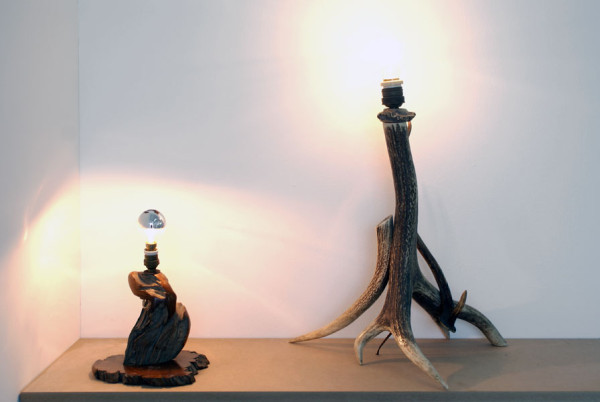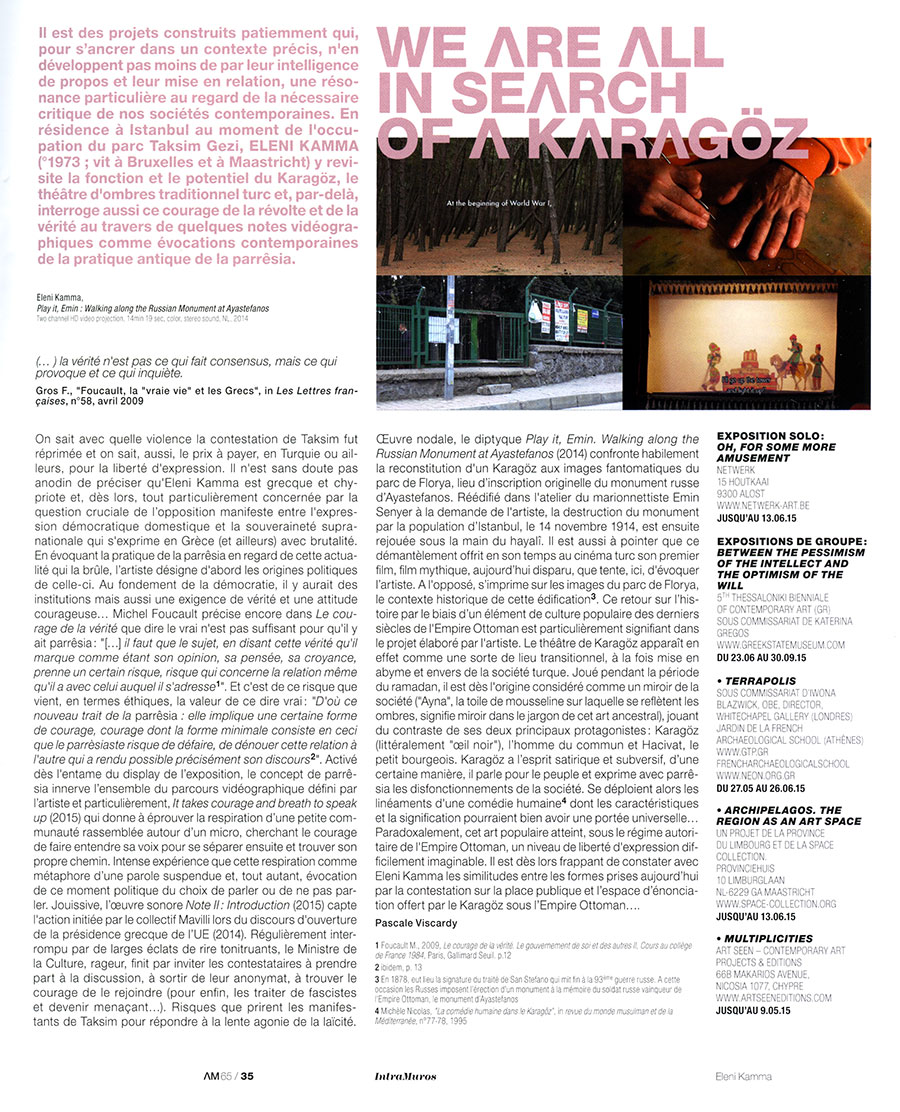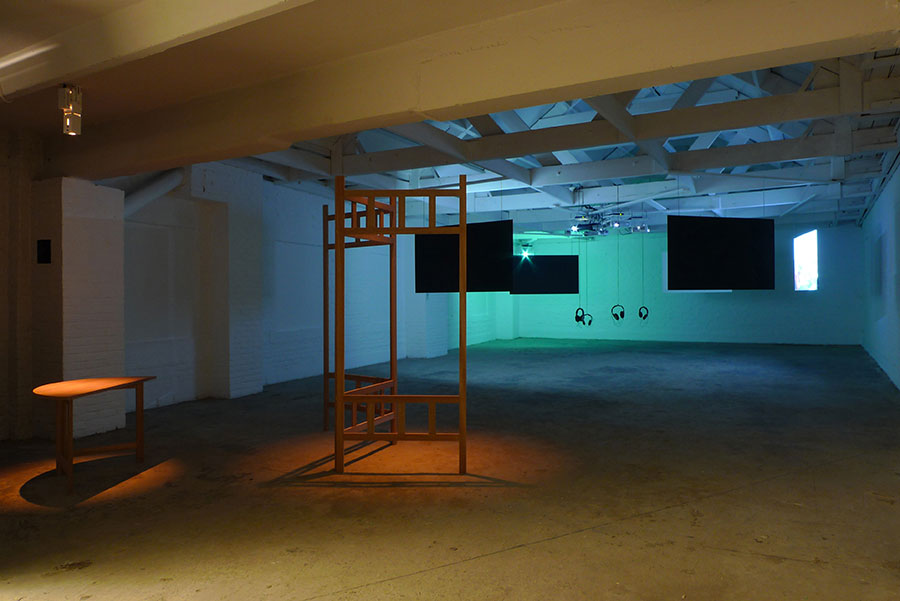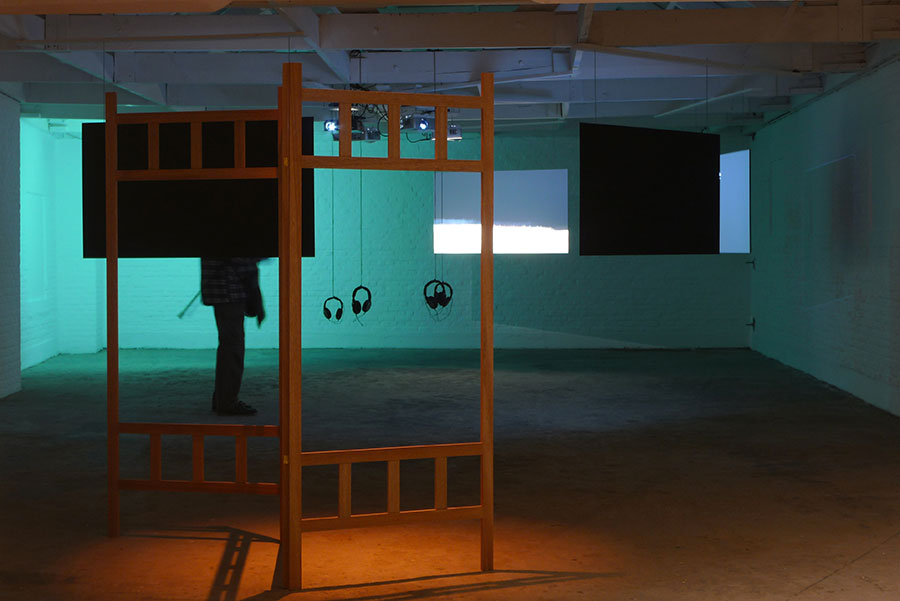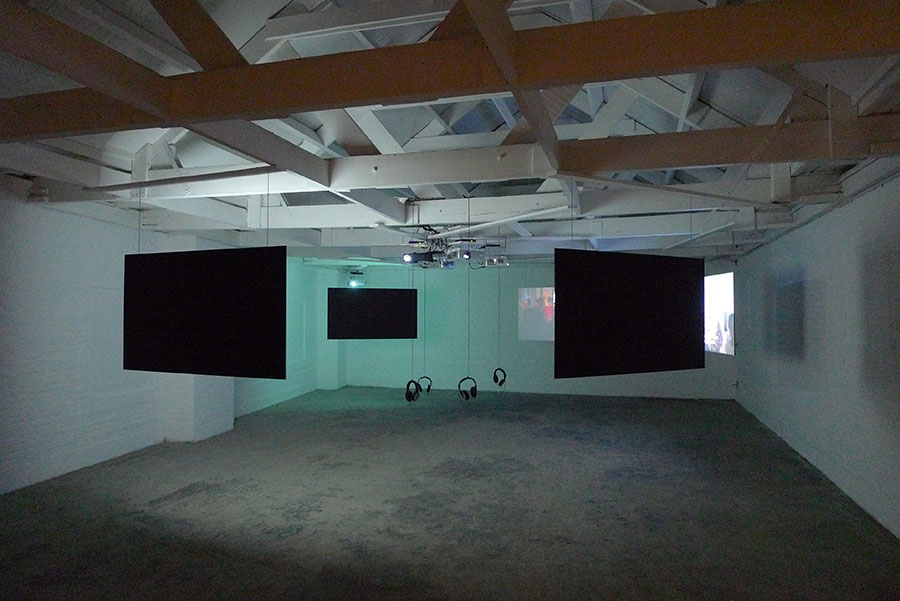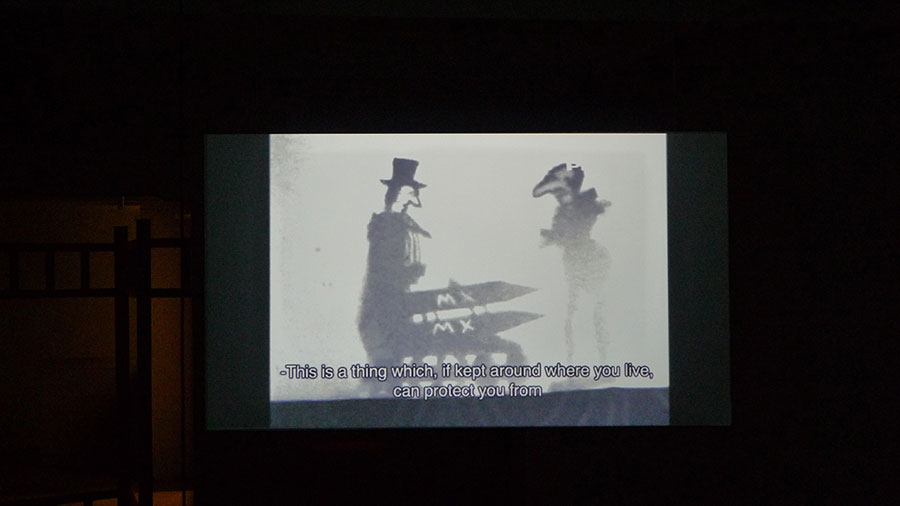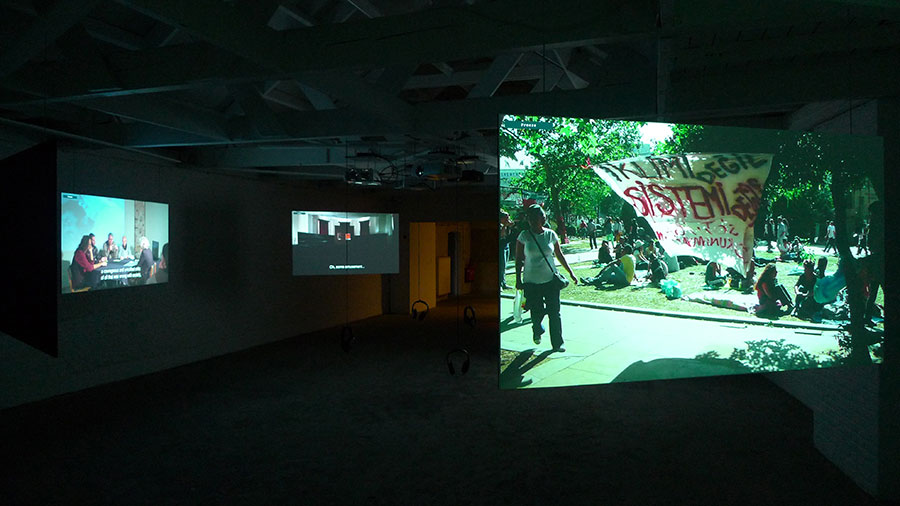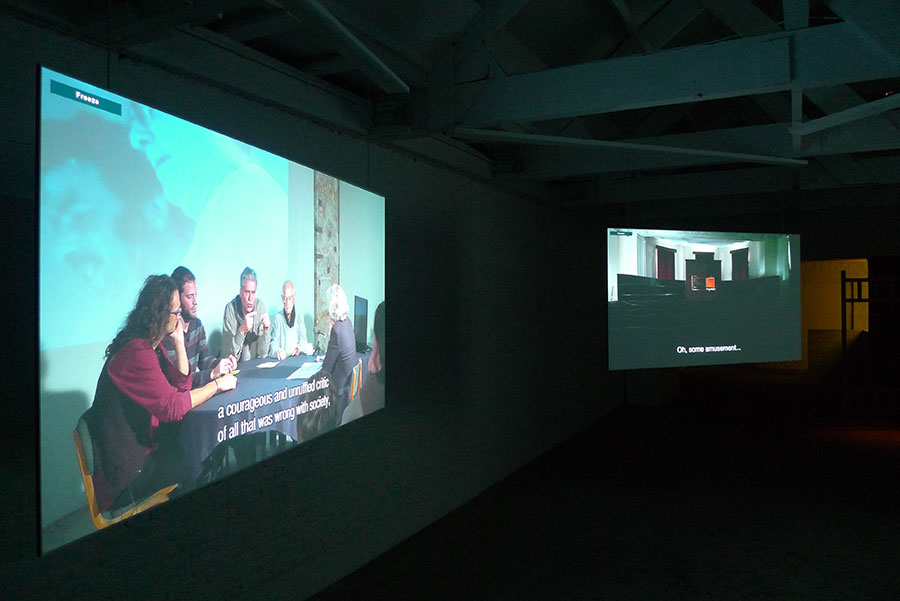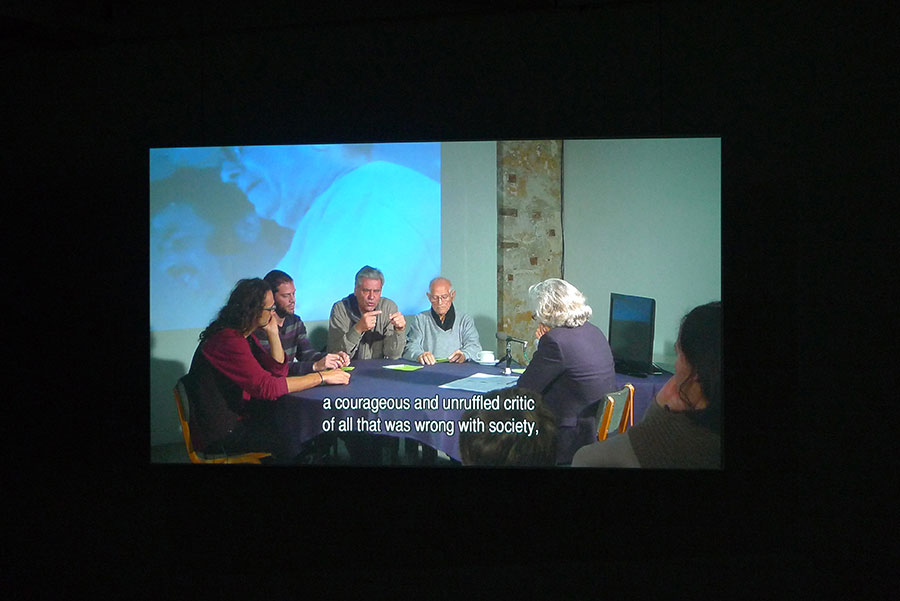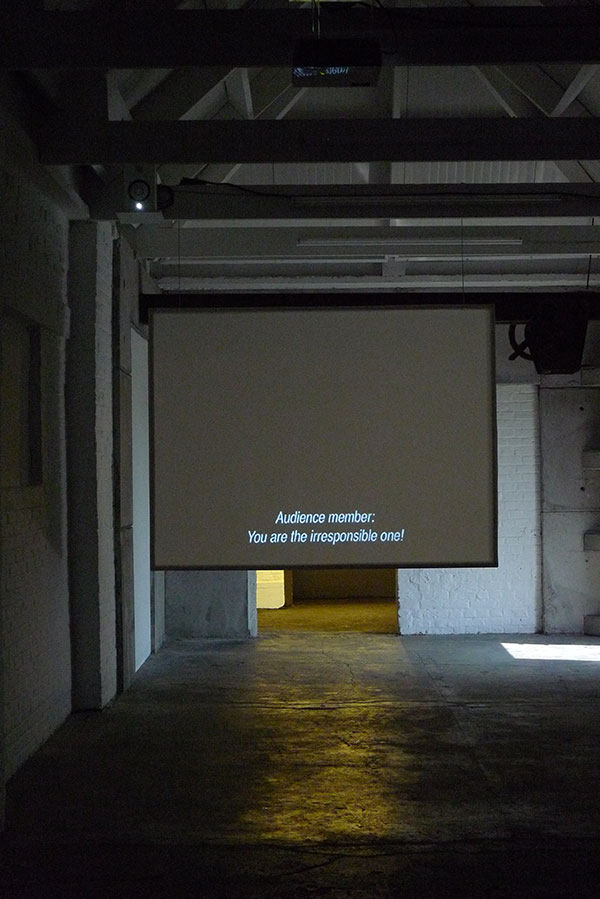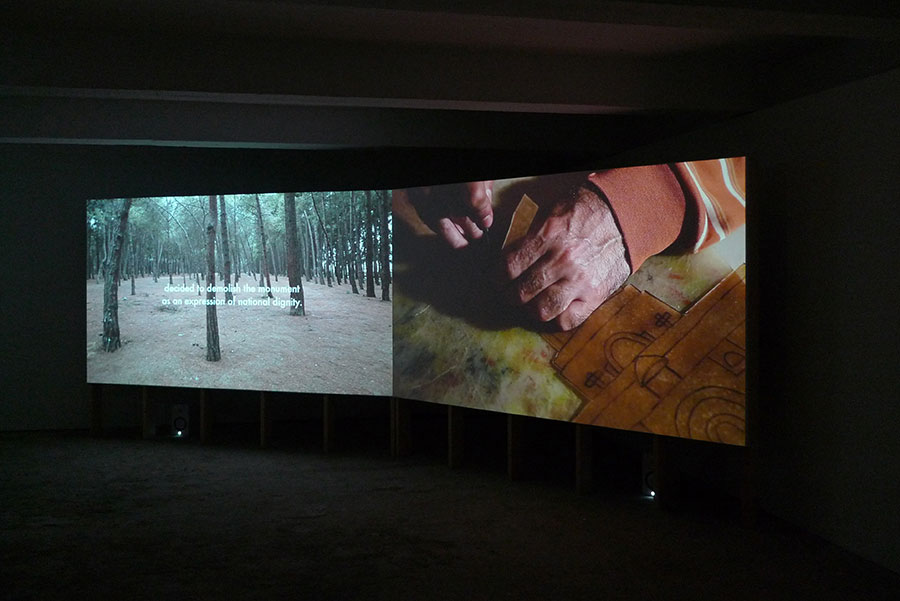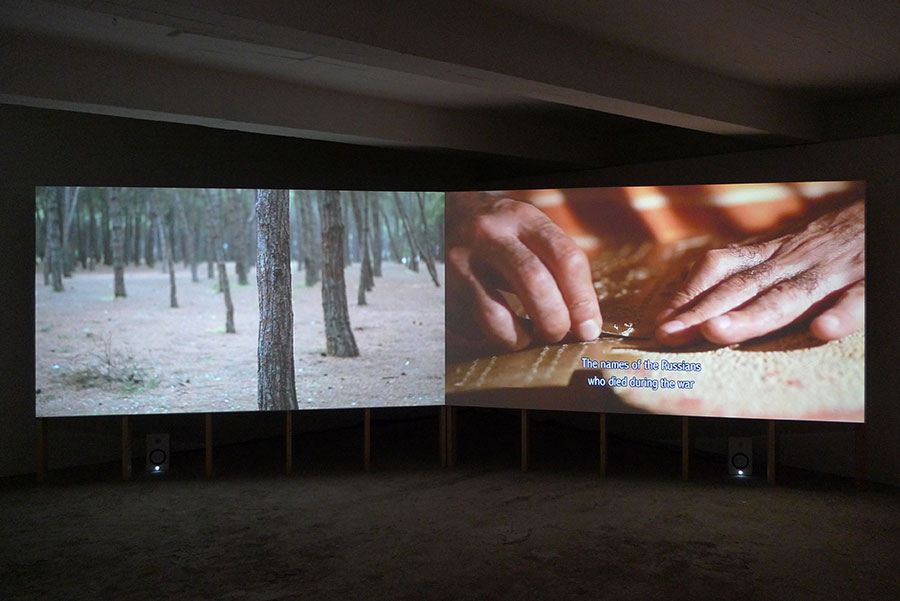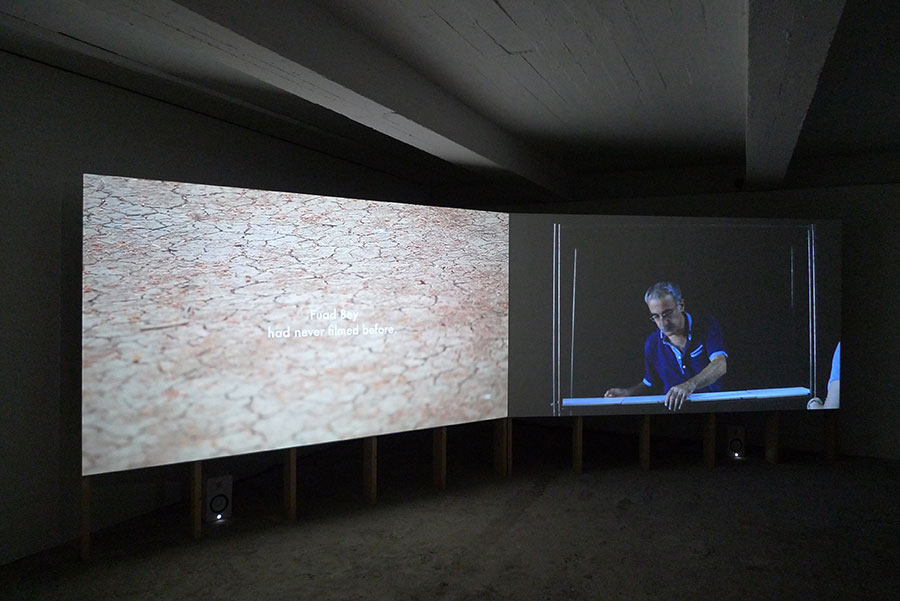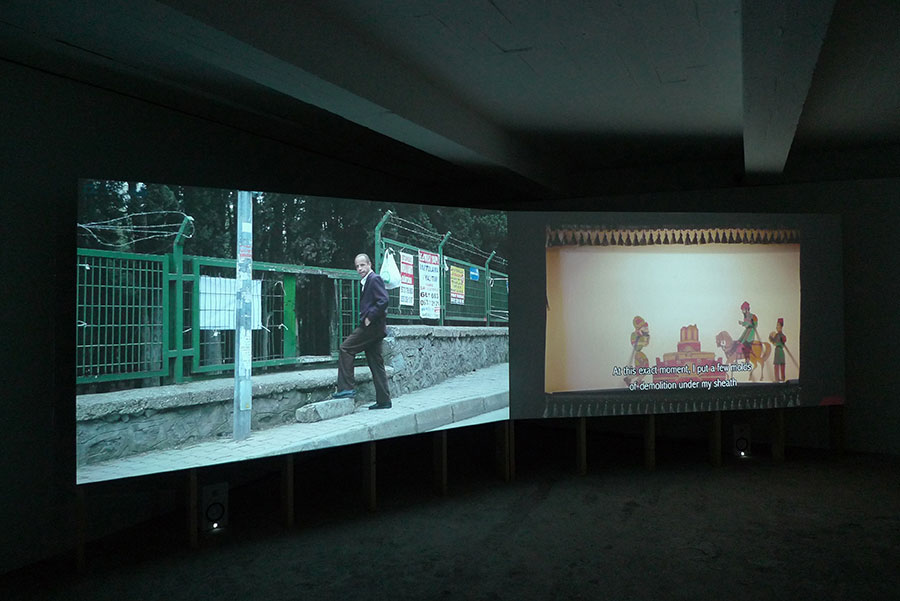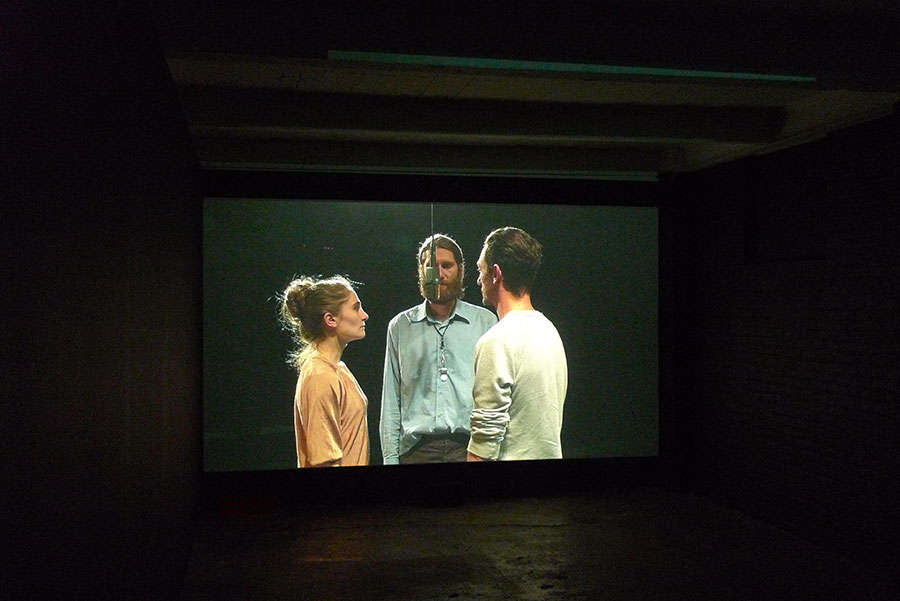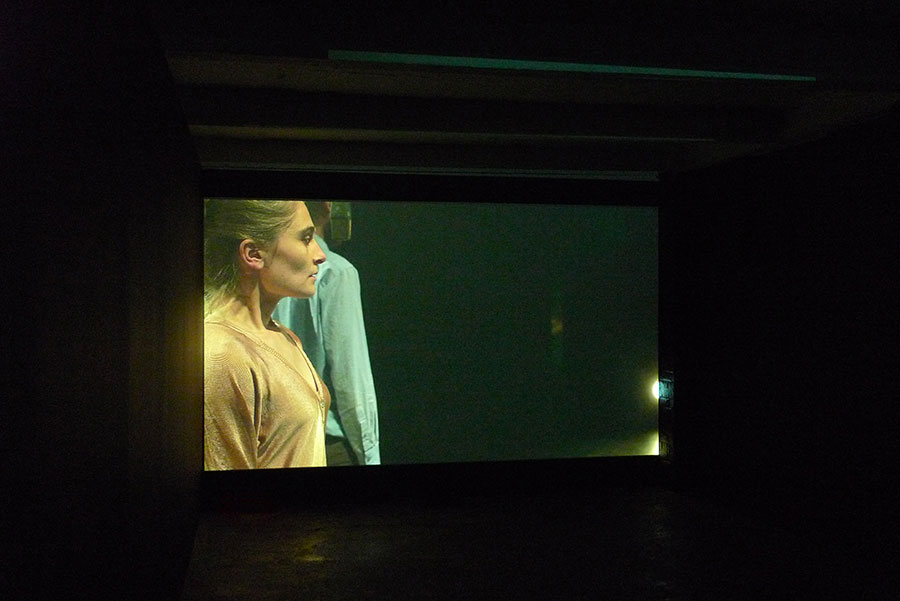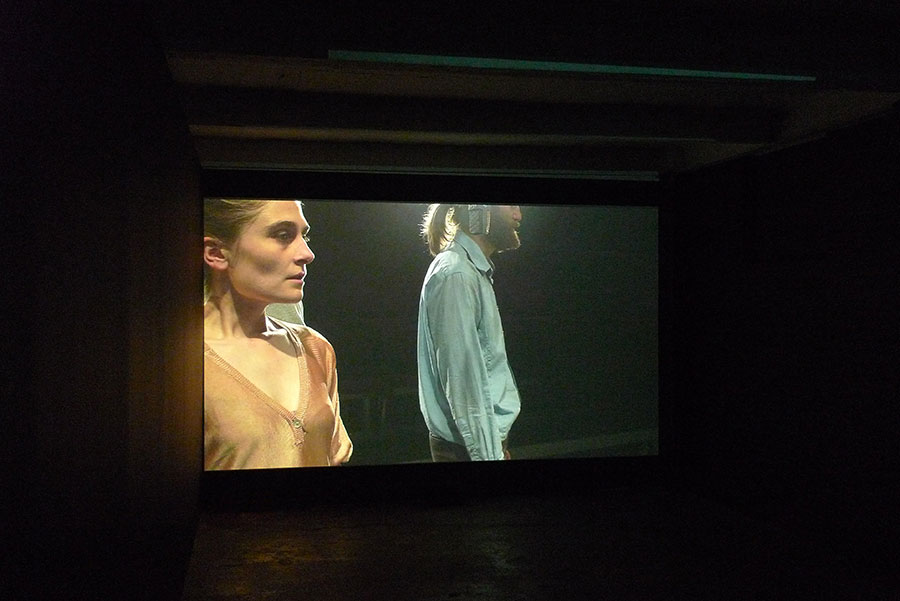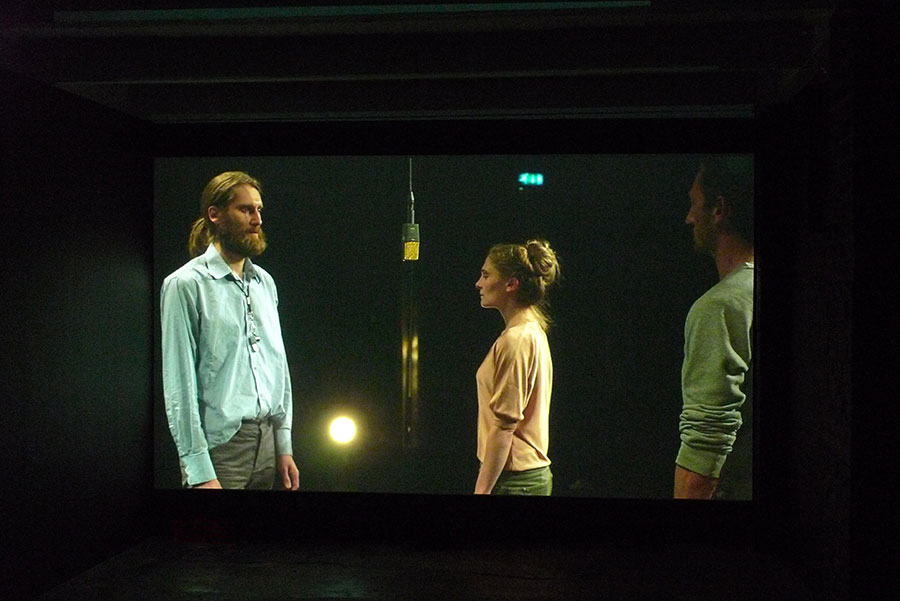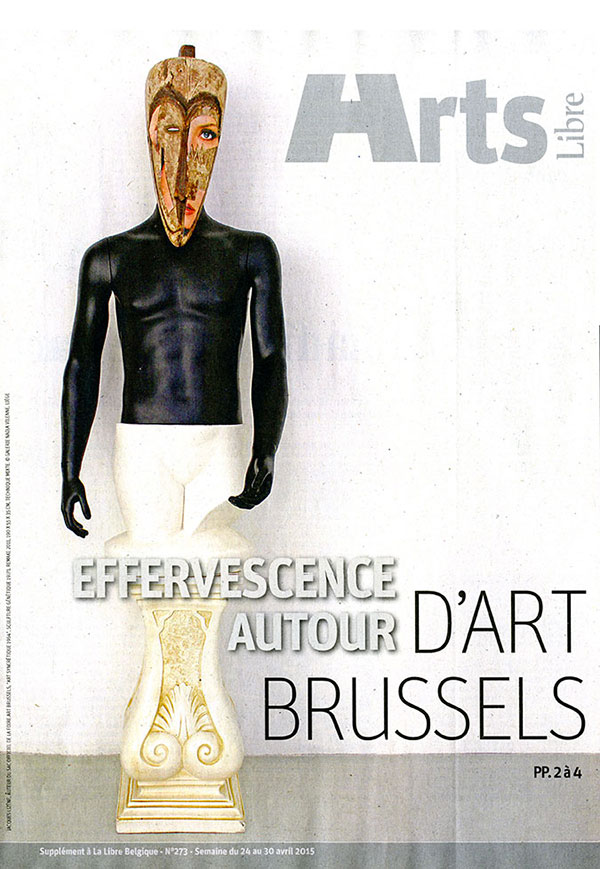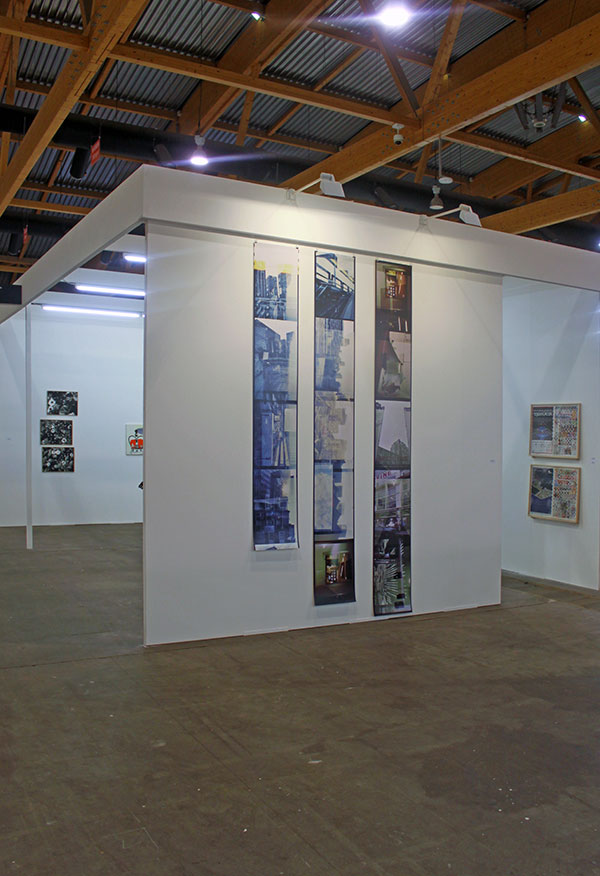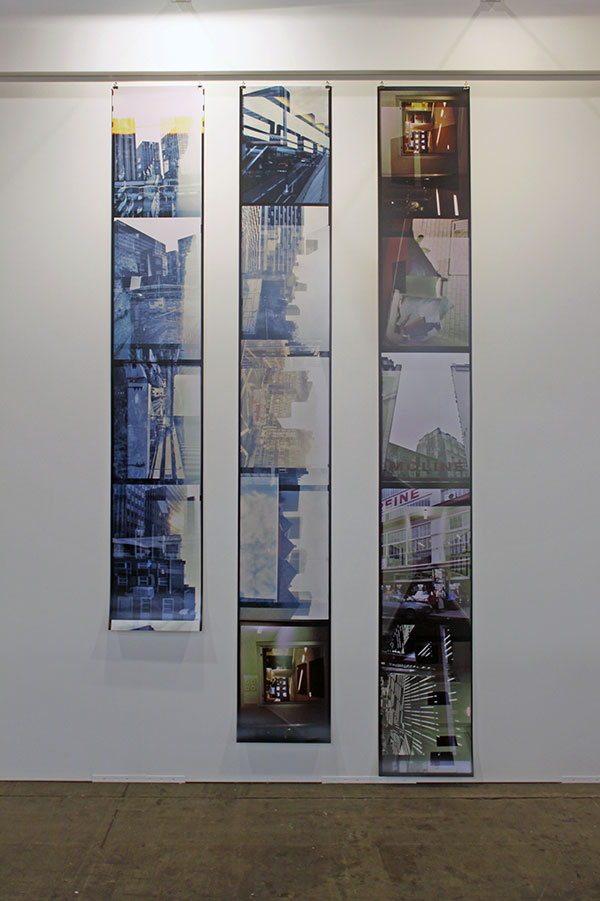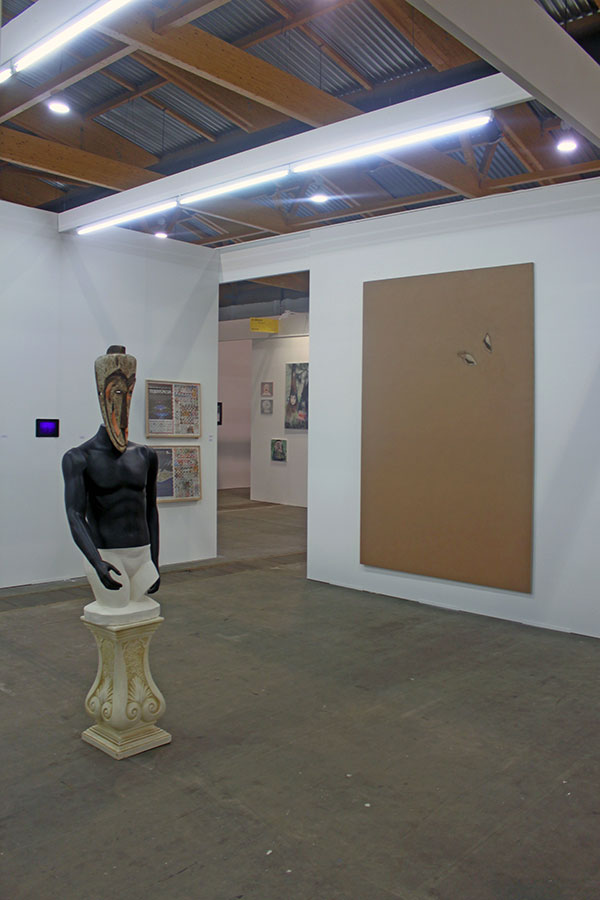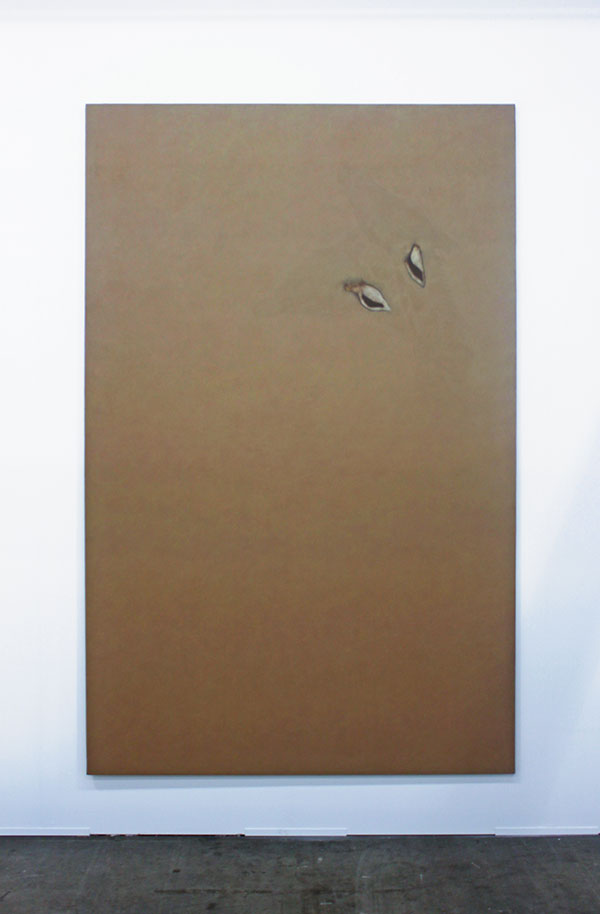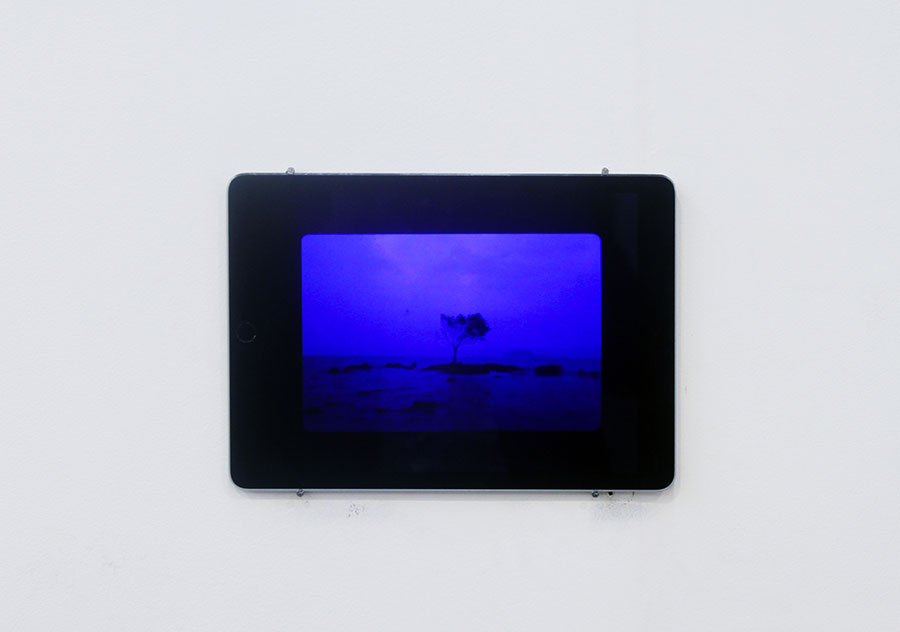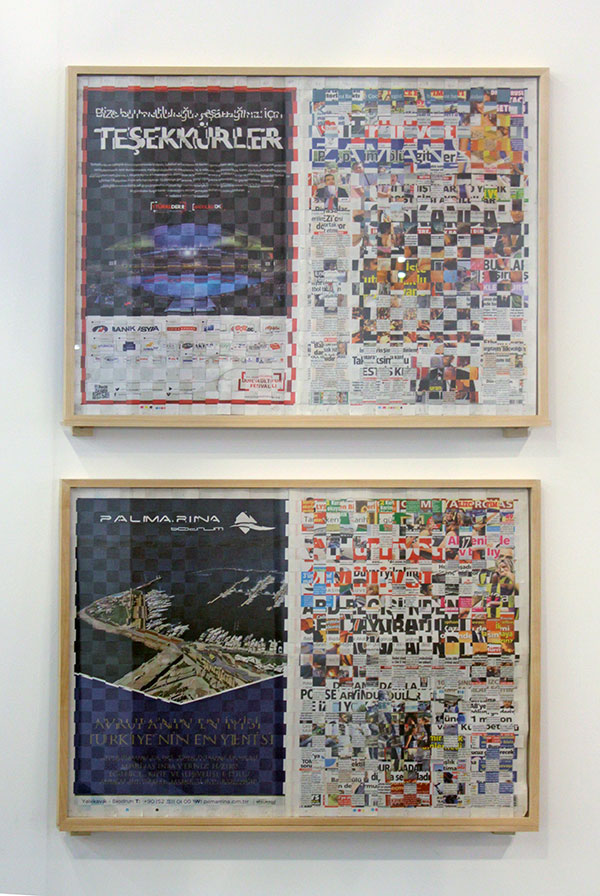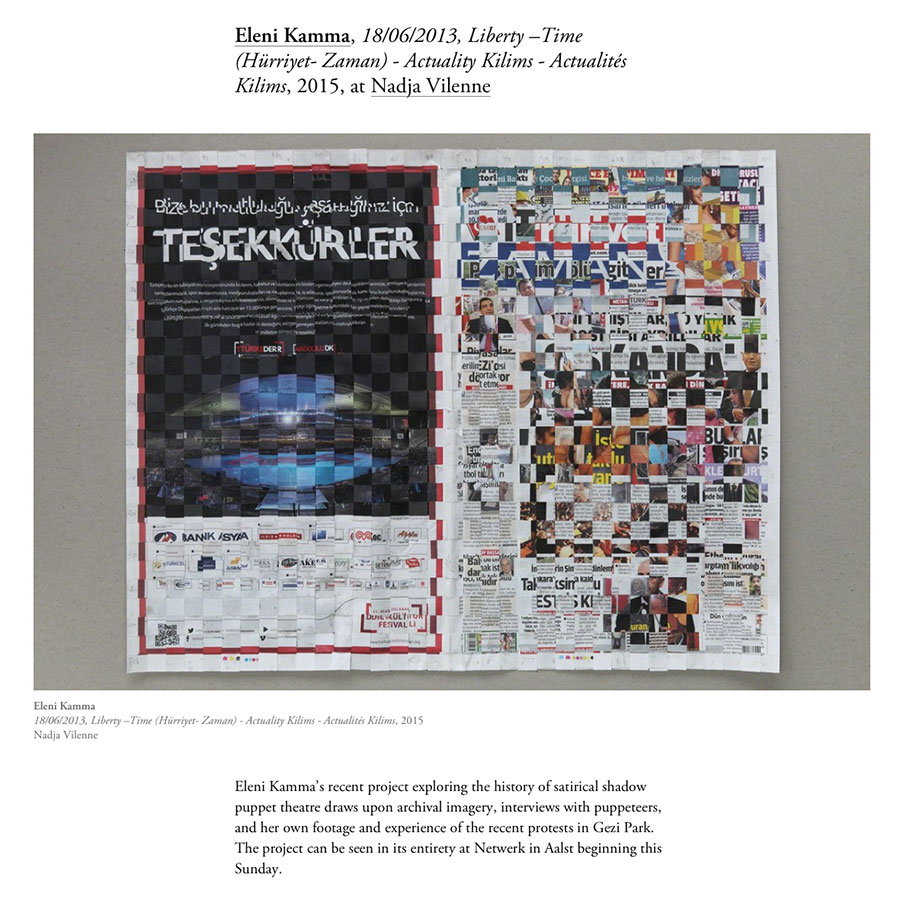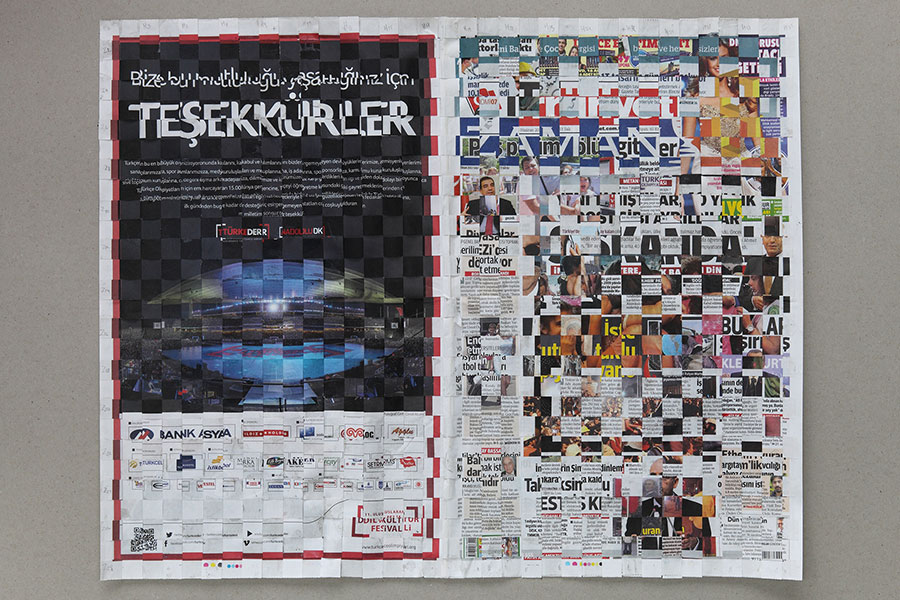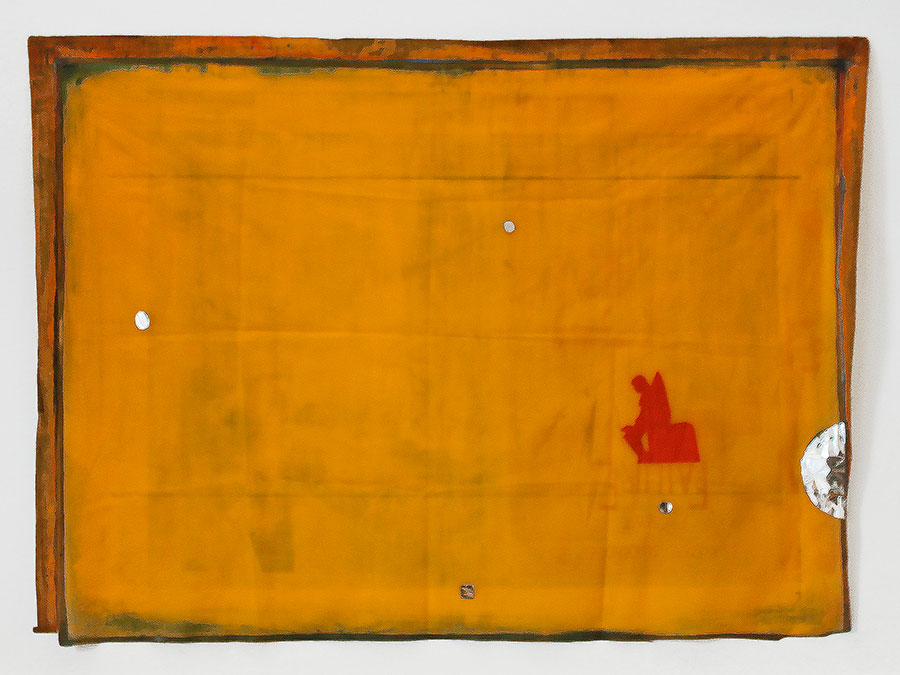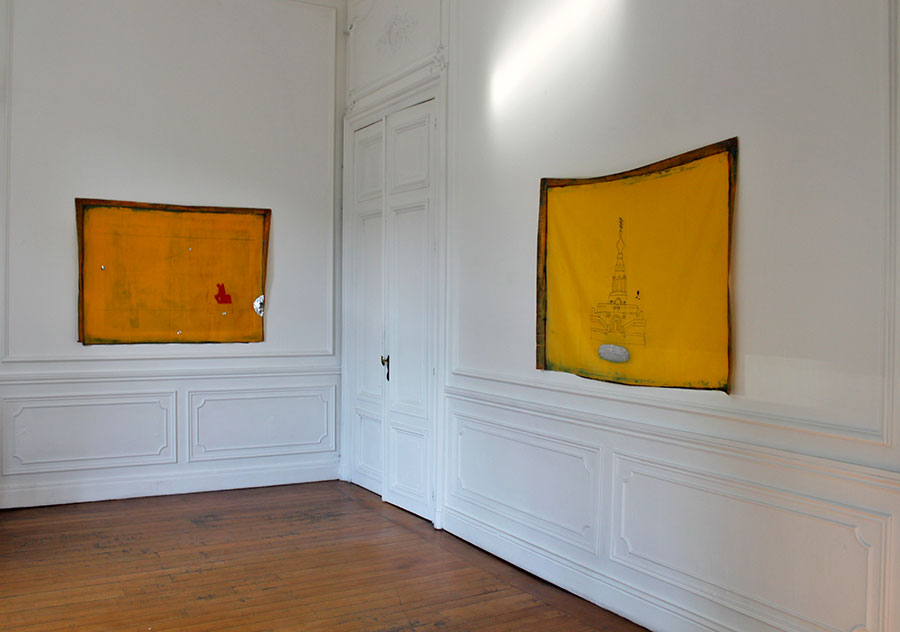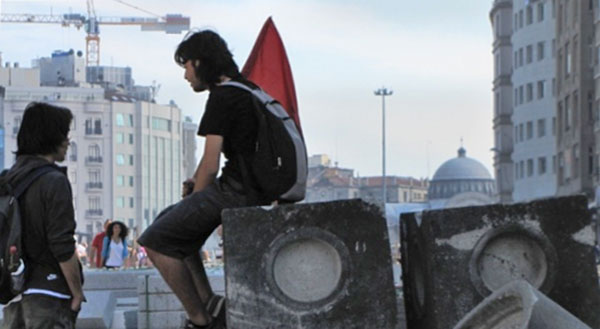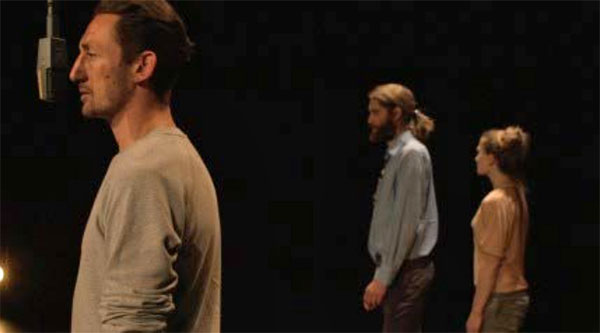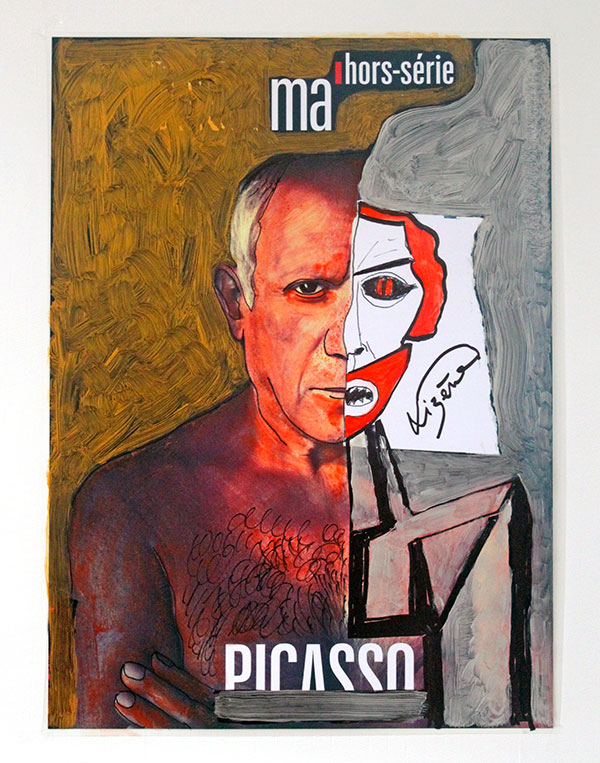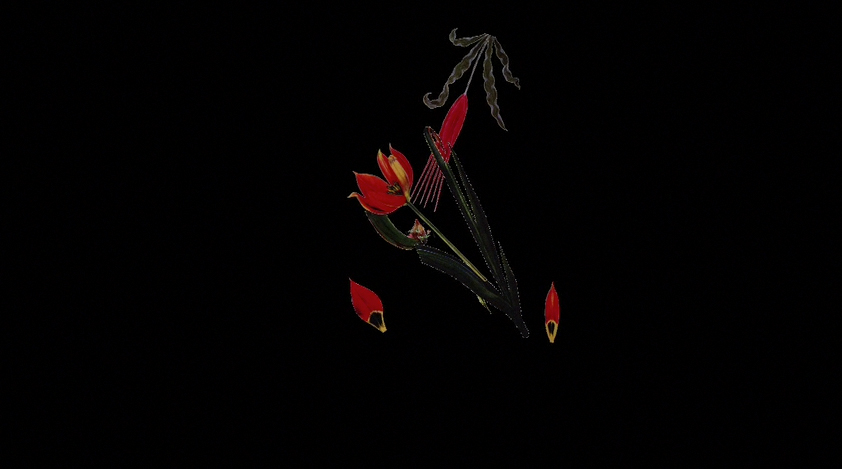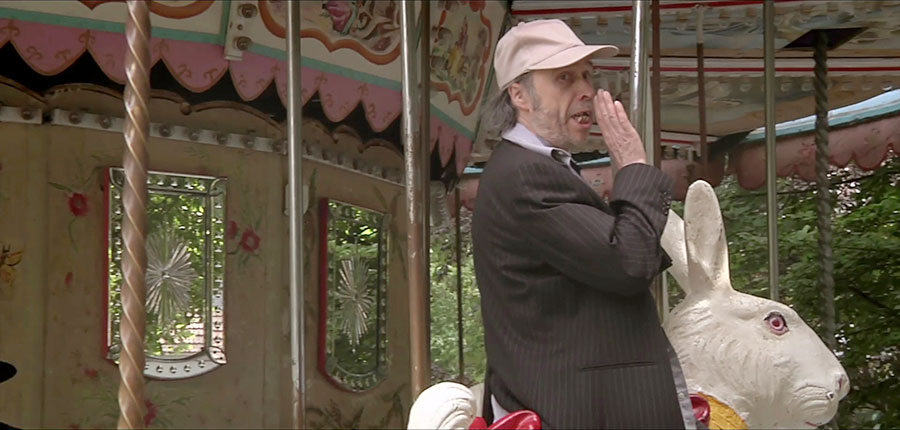Dans cette exposition solo, Eleni Kamma dévoile son dernier film, « Yar bana bir eglence: Notes on Parrhesia », complété par un paysage de clips vidéo et une installation autonome distribuée sur les quatre espaces d’exposition. La présentation a été conçue comme un environnement dans lequel les visiteurs peuvent se déplacer librement pour créer leurs propres itinéraires narratifs.
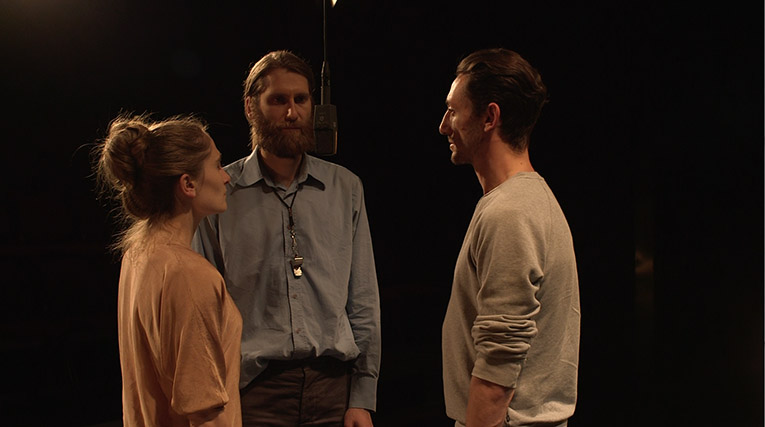
L’oeuvre « It takes courage and breath to speak up », une sorte de prélude à l’exposition, induit, dès le départ. une expérience de pensée. Dans cette œuvre vidéo, Kamma s’intéresse au concept grec de ‘parrhesia’, ou liberté de parole, une notion qui protège l’expression des opinions, mais en même temps, implique une obligation à s’exprimer au nom du bien commun – en dépit de la vulnérabilité que l’individu peut ressentir en conséquence. Le mouvement chorégraphique de la caméra enregistre les mouvements de trois performeurs qui occupent un espace théâtral représentant l’agora. Ils forment. à eux trois, une communauté, et à eux trois, rassemblent le courage de faire entendre leurs voix, pour finalement, se séparer, et trouver chacun un chemin propre.
‘Yar bana bir eglence’ est la phrase prononcée avant toute représentation dans le théâtre d’ombre turc traditionnel, le Karagoz. Le thème central de cette forme de théâtre de rue, resté très populaire depuis la fin du XVIIIe siècle, est une interaction amusante entre les deux protagonistes. Hacivat est le personnage éduqué, à l’aise en société, alors que Karagoz est le porte-parole de l’homme de la rue, déchargeant ses opinions dans la ‘parrhesia’. Cette image projetée alimente l’imagination, mais c’est la voix du narrateur qui assure le rôle dominant. Il dit tout haut ce que les gens n’osent pas dire mais souhaitent entendre. Il met sur la place publique leurs doléances à propos des injustices sociales. Il critique librement, depuis l’ombre, les politiciens locaux, et atteint un niveau de liberté d’expression presque surréel dans un régime autoritaire tel que l’était l’Empire ottoman. Pendant sa résidence à Istanbul en 2013, Kamma a été témoin des manifestations civiles du parc Taksim Gezi. Ce qui l’a frappée, c’est qu’un lien clair pouvait être fait entre la forme que prend l’espace public actuellement, et celui qui s’est formé à l’époque ottomane, dans la ‘parrhesia’, la satire politique, la participation et l’humour. Une observation très pertinente qu’elle met à l’oeuvre dans ses travaux les plus récents.
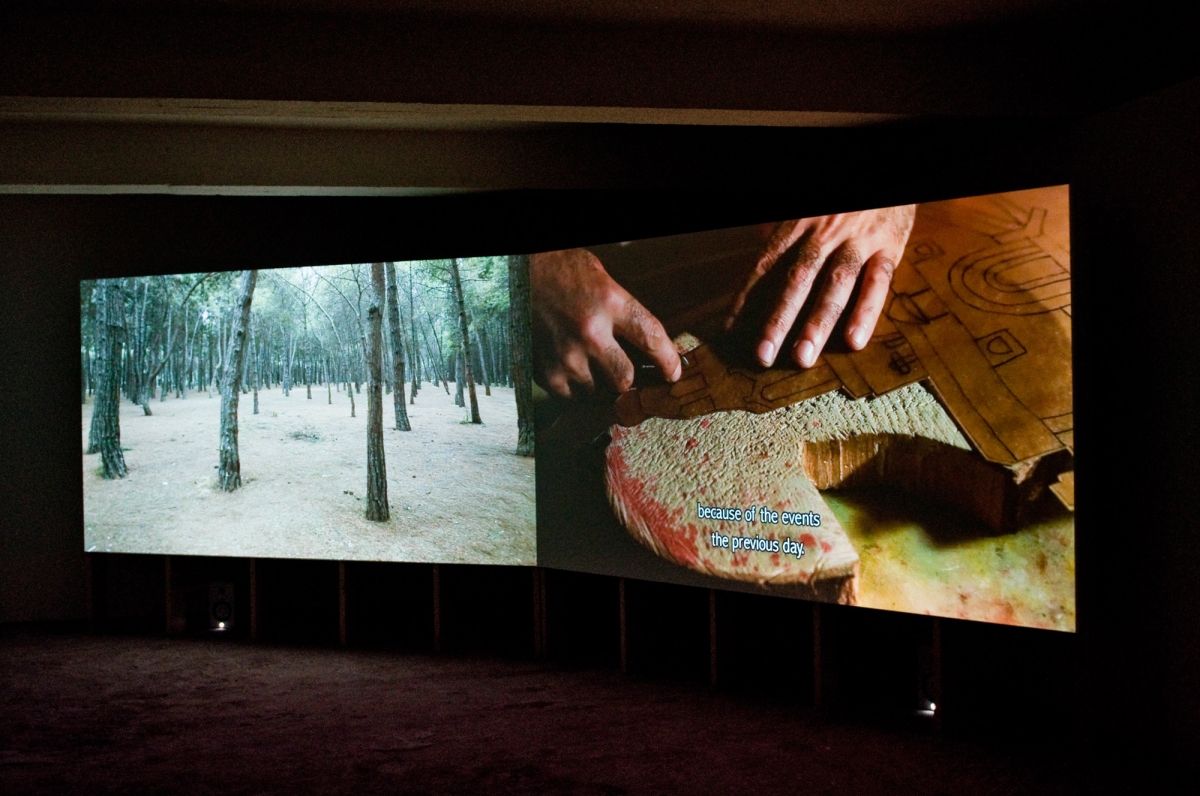
L’oeuvre « Play it, Emin. Walking along the Russian Monument at Ayastefanos », présentée comme un dytique d’images, prend la destruction du mémorial russe d’Ayastefanos le 14 novembre 1914 comme point de départ. Bien que les images documentaires de cette action symbolique nationaliste aient été perdues, l’événement lui-même marque la genèse du film turc. La destruction du monument russe annonce le début de la première guerre mondiale et la fin de l’Empire ottoman. Kamma invite le maître de Karagoz Emin Senyer à recréer cette action dans une pièce de théâtre d’ombres. Il a fondé son interprétation sur du matériel documentaire existant : trois photos et une description de l’événement par différentes sources: les mémoires personnelles du lieutenant impliqué et des journaux. Kamma a tourné dans la région de Florya, où la destruction du monument a eu lieu il y a 100 ans. Ses images se confrontent au travail d’ Emin Senyer, sur l’autre écran, et à une performance évoquant l’événement historique.
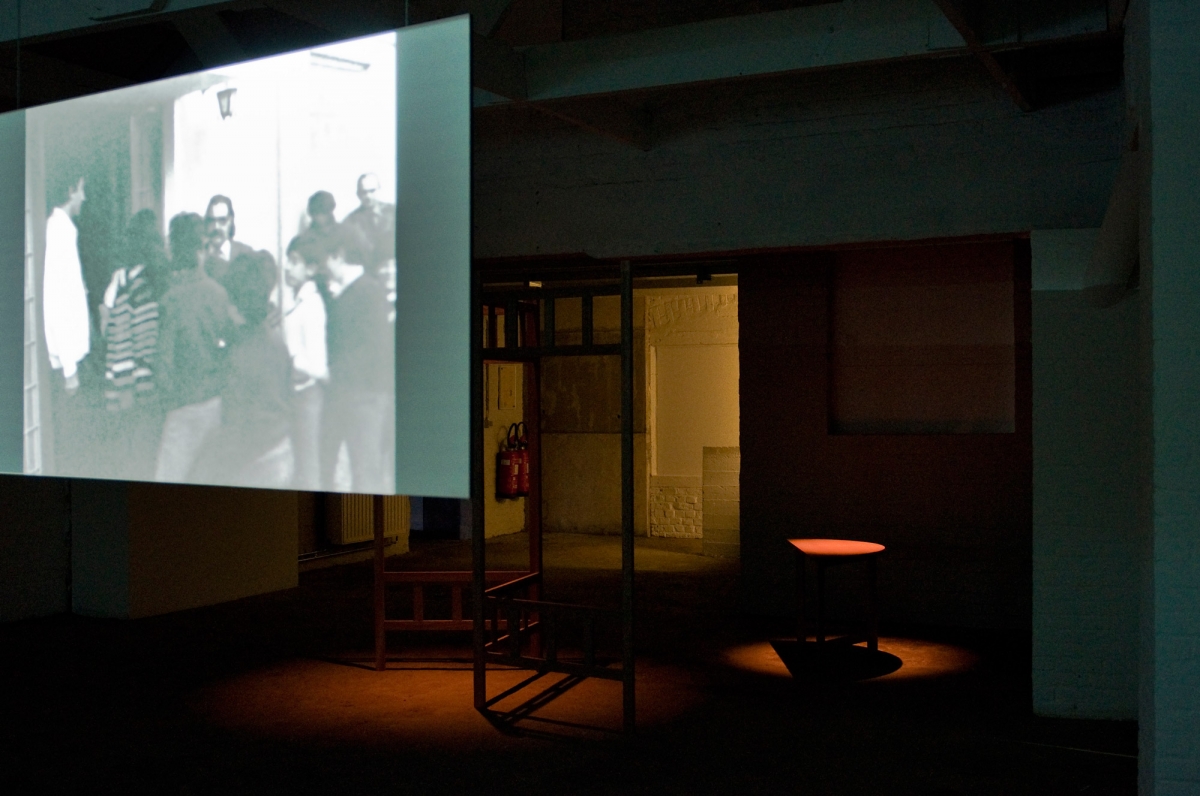
A l’étage, dans le Pakhuis de Netwerk, une sélection de clips vidéo explore le thème de la ‘parrhesia’, si important dans les films les plus récents de Kamma. La scénographie, fragmentée et spontanée, joue sur la forme avec un pouvoir analogue à celui des paroles prononcées. C’est évident dans la formidable œuvre sonore « Note Il: Introduction », et puissant dans l’énigmatique installation « Yar bana bir eglence: Seven Notes on Parrhesia ». Aujourd’hui, à l’ère de l’information rapide, la transition de la communication orale à la communication écrite semble occuper une place mineure dans l’histoire cosmopolite. La voix de Karagoz s’est tue au XIXe siècle, quand la satire politique a été interdite. Le pouvoir social du théâtre oral a été étouffé par l’influence du théâtre occidental et par l’écriture. L’installation de Kamma offre au spectateur un espace libre dans lequel réfléchir sur le passage silencieux d’un ancien médium né de la voix du peuple, et qui a bien tenu la route, si on le compare à nos espaces publics numériques, excessivement urbanisés et excessivement contrôlés.
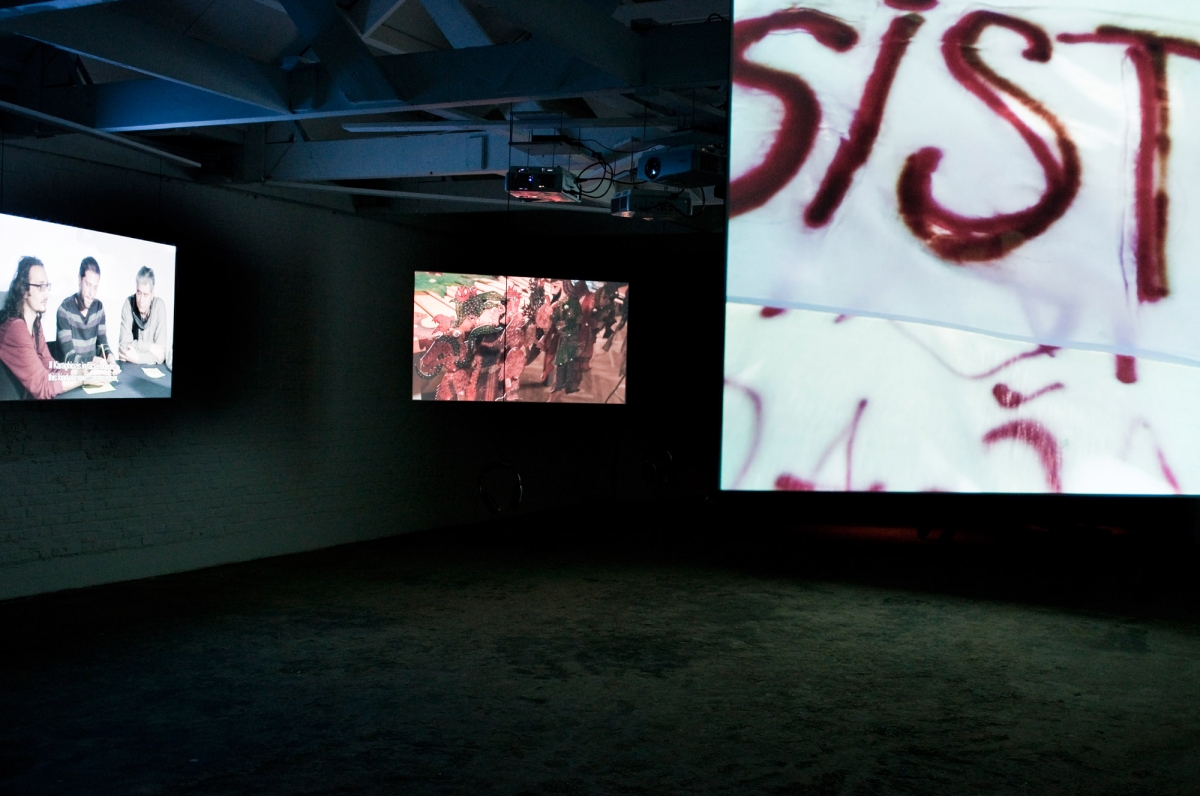
In this solo exhibition, Eleni Kamma unveils her new film project “Yar bana bir eglence: Notes on Parrhesia” – complemented by an episodic landscape of video clips – and autonomous installations spread out over four exhibition spaces. The presentation was conceived as an experience-focused environment in which individual viewers can move freely to create their own narrative paths.
The work “It takes courage and breath to speak up” features autonomously as a possible prologue of the exhibition, encouraging a thoughtful approach from the start. In this video work, Kamma reflects on the Greek ‘parrhesia’ or freedom of speech, a notion that stands for the expression of opinion while also alluding to an obligation to speak out in service of the greater good – in spite of file vulnerability that the individual may experience as a consequence. The choreographic movement of the camera captures three performers who occupy a theatre space representing a typical public agora. They come together as a community and together summon the courage to voice their thoughts freely, ultimately disbanding to forge their own paths. ‘Yar bana bir eglence’ is the customary opening sentence in traditional Turkish shadow theatre, Karagoz. The central theme in this form of street theatre, which remained immensely popular until the late 18th Century, is the amusing interaction between the two protagonists. Hacivat embodies the better-educated well to do in society, while Karagoz is the outspoken representative of the man on the street, venting his opinions through ‘parrhesia’. This projected image stokes the imagination, but it is the voice
of the narrator that assumes the more dominant role. The narrator utters what the people dare not speak but still wish to hear. He airs their grievances regarding social injustices. He freely criticises from the shadows of local politics, commanding an almost preposterous level of expressive freedom in a totalitarian regime such as the Ottoman Empire. During her residency in Istanbul in 2013, Kamma witnessed the civil protests in Taksim Gezi Park. It struck her that a clear link could be made between the way in which the public space is currently taking -a new shape and how it did so in the Ottoman era: through ‘parrhesia’ and political satire, public participation and humour. A keenly relevant observation of current affairs that she has translated into her most recent work.
The work Play it, Emin. Walking along the Russian Monument at Ayastefanos, presented as a diptych of side-by-side images, takes the destruction of the Russian memorial in Ayastefanos on 14 November 1914 as its point of departure. Although the documentary footage of this symbolic nationalistic action is now lost, the event itself is viewed as marking the genesis of Turkish film. The destruction of the Russian monument heralded the beginning of WWI and the end of the Ottoman Empire. Kamma invited Karagoz master Emin Senyer to depict this destructive act in a shadow play. He based his interpretation on existing documentary material: three photos and a description of the event from two different sources, the personal memoires of the lieutenant involved and newspaper reports. Kamma made recordings in the district of Florya, where the destruction of the monument took place 100 years ago. The images are juxtaposed with Emin Senyer’s creative process and evocative performance of the historical event on the other screen.
ln the upper spaces of Netwerk’s Pakhuis, a selection of video clips explore the theme of ‘parrhesia’ that is so prominent in Kamma’s most recent film work. The scenography, fragmented though unforced, plays with form with a power analogous to that of the spoken word. This is very apparent in the rhetorical work Note Il: Introduction, and equally powerful in the enigmatic installation “Yar bana bir eglence: Notes on Parrhesia”. Now, in the rapidly evolving information age, the transition from oral to written communication seems to occupy a minor footnote in cosmopolitan history. The voice of Karagoz was silenced in the 19th Century when political satire was made forbidden. The social power of oral theatre was lost due to the influence of Western theatre culture and the introduction of the written word. Kamma’s installations offer the viewer a free space in which to ref1ect upon the quiet passing of the old medium that was brought to life by the voice of the people, and holds these thoughts up in comparison with our now excessively monitored urban and digital public spaces.
Eleni Kamma
Oh, for some more Amusement!
DI 19.04 — SA 13.06 2015
Netwerk / centre d’art contemporain
Houtkaai 15
9300 Alost
Belgique
[sociallinkz]
